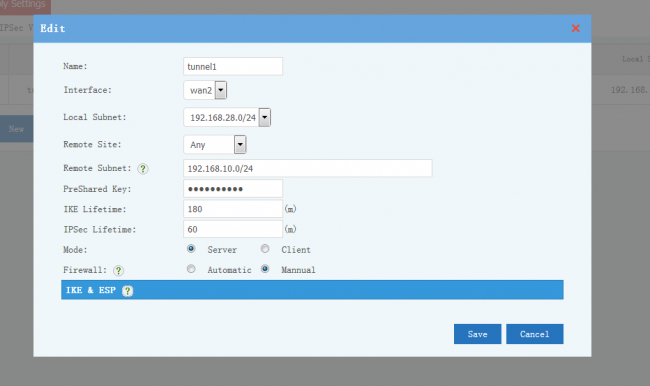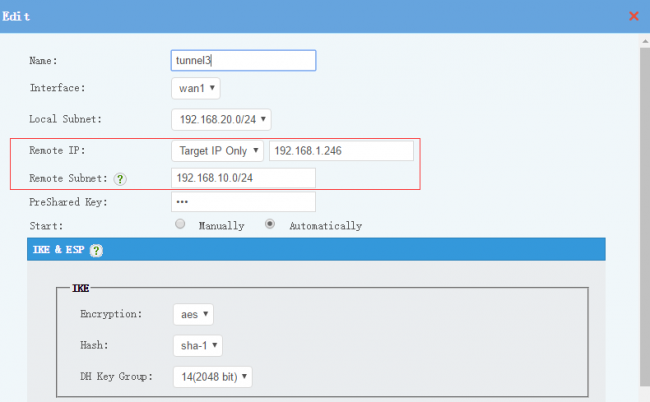Ipsecvpn
From Wiki of WFilter NG Firewall
(Difference between revisions)
(→Tunnel Status) |
(→Tunnel Status) |
||
| Line 42: | Line 42: | ||
Move your mouse into the "state" icon, you will see the tunnel status and connected clients. | Move your mouse into the "state" icon, you will see the tunnel status and connected clients. | ||
| − | [[File:ipsec03.png| | + | [[File:ipsec03.png|1000px]] |
== FAQ == | == FAQ == | ||
[[Category:VPN]] | [[Category:VPN]] | ||
Revision as of 15:00, 19 August 2016
Contents |
1 IPSec Tunnels
This modules can build IPSec tunnels between multiple WFilter ROS networks, and make a secure site-to-site VPN. The number of IPSec Tunnels depends on your hardware performance, there is no software limit on the tunnels number.
2 IPSec Tunnel Settings
Before you setup a IPSec tunnel, you need to design your tunnels. Only a network with a static internet ip address can act as a tunnel server. For example:
- Suppose you have 3 network: A, B, C.
- A has a static public IP, B and C ip addresses are dynamic.
The solution will be:
- Create a tunnel in A network, set "Remote IP" to "Any".
- Create tunnels in B and C networks, set "Remote IP" to A's public ip address.
- Now the tunnels are ready. A, B, C now are in a VPN network. The tunnels are between A&B and A&C. Since there is no tunnel between B and C, B and C can not visit each other.
Description of tunnel settings:
- Name: tunnel name.
- Interface: WAN interface to setup the tunnel.
- Local Subnet: local subnet to be connected with the tunnel.
- Remote IP: another side of the tunnel, "Any" to allow any others to connect.
- Remote Subnet: remote LAN subnet which will be forwarded to the tunnel.
- PreShared Key: tunnel secret key. With a correct key, the tunnel can not be established.
- Start: Manually or Automatically.
- IKE, ESP: algorithm for authentication and transfer. Both sides of the tunnel shall have the same algorithm.
Server side settings examples:
Client side settings examples:
Notice:
- Access of tunnels are also applied with firewall rules. For example, if you want to block VPN tunnels users from accessing a local server, you need to setup a firewall rule to block the target server ip from WAN interface.
- If you enable DMZ or "Static NAT", please add IPSec port "500,4500" to "port exception". Otherwise, IPSec connections can not be established.
- If the WAN interface has multiple static ip addresses, IPSec only listens in the first IP address.
3 Tunnel Status
Move your mouse into the "state" icon, you will see the tunnel status and connected clients.


